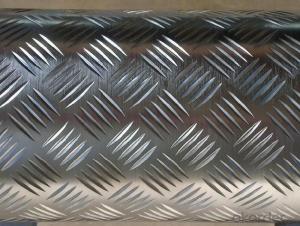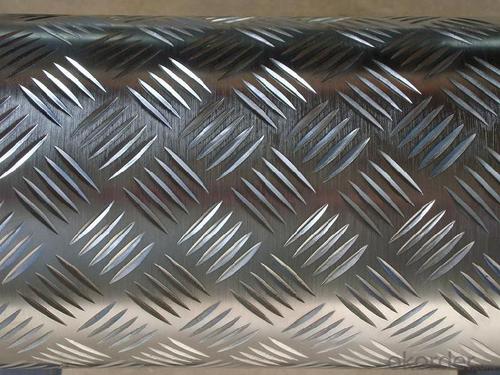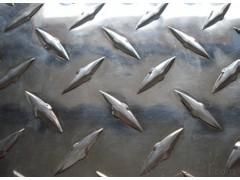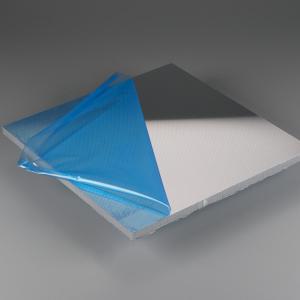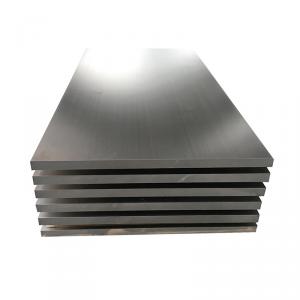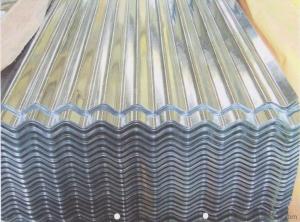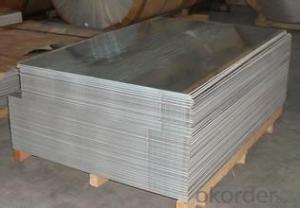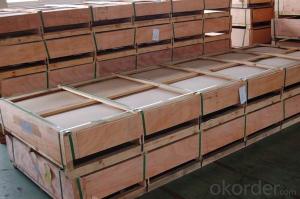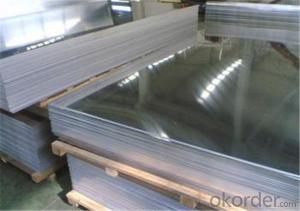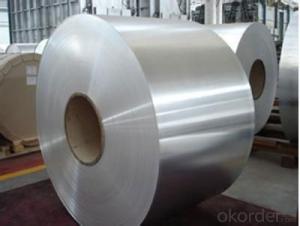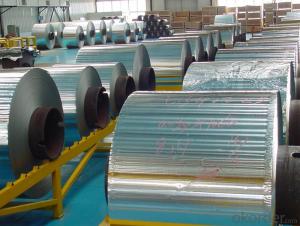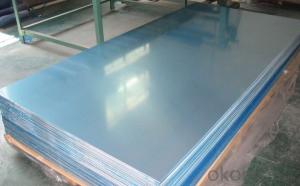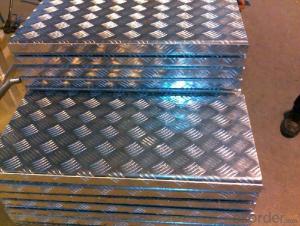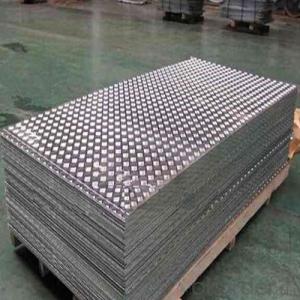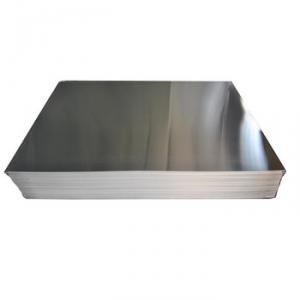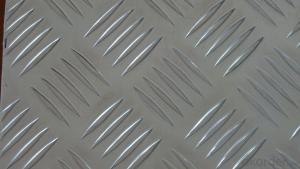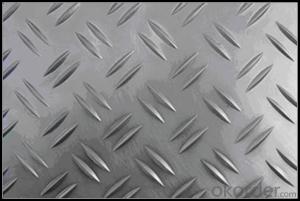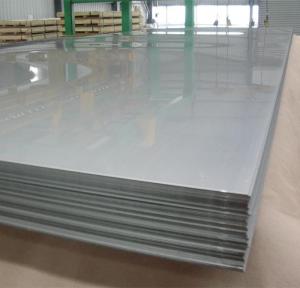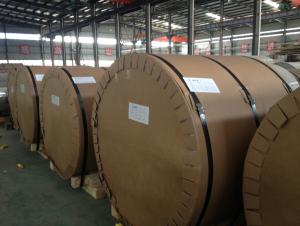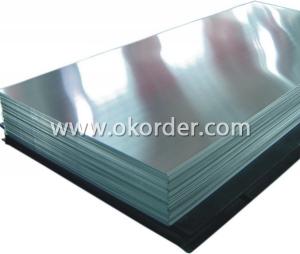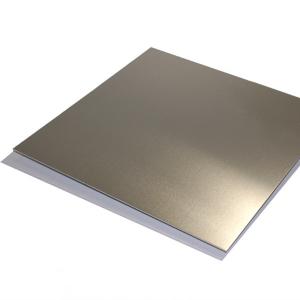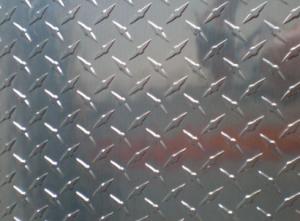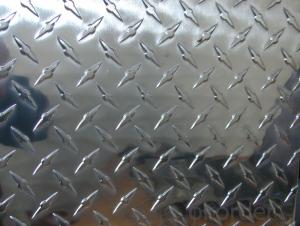Tlc Aluminum Sheets Si 60 F254 Anti-Slip
- Loading Port:
- China Main Port
- Payment Terms:
- TT or LC
- Min Order Qty:
- 4 m.t.
- Supply Capability:
- 10000 m.t./month
OKorder Service Pledge
OKorder Financial Service
You Might Also Like
1.Structure of Anti-slip Aluminum Sheets Description
Anti-slip Aluminum Sheets have great ducility, heat conductivity, anti-corrosion and moisture resistance properities which are very useful in the filed of construction.
Anti-slip Aluminum Sheets are widely used for decorative purposes in construction, packing and appliance. It is also very commonly used for anti-slippery purpose in vehicles and pulice places.
2.Main Features of Anti-slip Aluminum Sheets
• Superior quality of raw material
• Reasonable and stable chemical composition
• Accurate tolerance
• Goode mechanical property
3.Anti-slip Aluminum Sheets Images
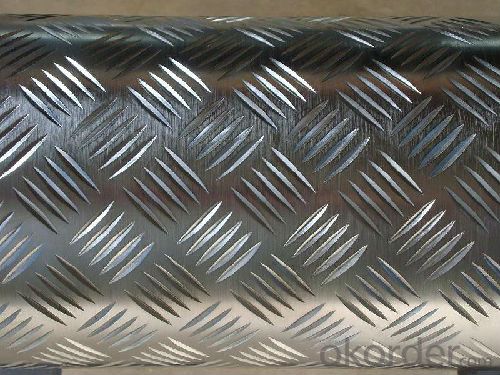
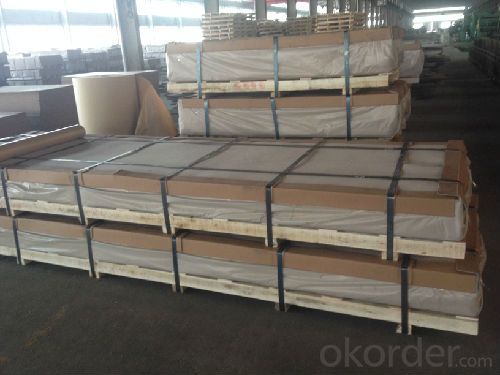
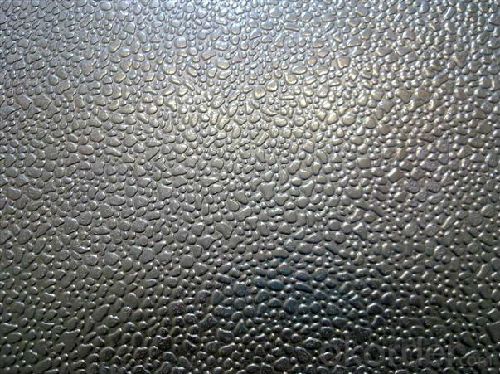
4.Anti-slip Aluminum Sheets Specification
Alloy | AA1xxx, AA3xxx, AA5xxx |
Temper | H14, H16, H18, H22, H24, H26, H32, O/F |
Thickness | 0.2mm -- 20mm |
Width | 10mm -- 1500mm |
Standard | GB/T 3880-2006 |
5. FAQ of Anti-slip Aluminum Sheets
A.How to guarantee the quality?
Customers are welcome to our mill to visit and check the products. Besides, we can arrange a third party to testAnti-slip Aluminum Sheets.
B.When will you deliver the products?
Anti-slip Aluminum Sheets will be delivered within 35 days after receiving advanced payment or original L/C.
- Q: For my chem class that I just barely started taking, we're making bohr models. Even though my teacher explained it, I still dont get the concept of it all, like how the protons are lined up in their inner circle and the outer circles. I get everythign else about atoms except how they're actually made up lol. Maybe someone on here can explain it to me? I hope so because i have to make a model for it for friday.The element I'm asigned is aluminum btwYour help is greatly appreciated!
- Aluminum Bohr Model
- Q: Can the aluminum sheets be used for manufacturing kitchen countertops?
- Certainly! Kitchen countertops can indeed be manufactured using aluminum sheets. Aluminum proves to be a versatile and durable material, displaying resistance against both corrosion and heat. Its lightweight nature and easy workability make it an ideal choice for crafting custom countertops in a variety of sizes and shapes. Moreover, aluminum countertops boast a contemporary and sleek appearance, while also being effortlessly cleanable and maintainable. Nevertheless, it is noteworthy that aluminum is comparatively softer when compared to other commonly utilized countertop materials like granite or quartz. Consequently, aluminum countertops may be more susceptible to scratches and dents. However, with proper care and maintenance, aluminum sheets can serve as a feasible alternative for producing kitchen countertops.
- Q: Can aluminum sheets be used for reflective purposes?
- Yes, aluminum sheets can be used for reflective purposes. Aluminum is a highly reflective metal that has a shiny and smooth surface. It has a high reflectivity index, making it an excellent material for reflecting light and heat. Aluminum sheets are commonly used for various reflective applications, such as in mirrors, solar panels, lighting fixtures, and insulation. Due to its reflective properties, aluminum sheets are also used in the construction industry to increase energy efficiency by reflecting sunlight and reducing heat absorption.
- Q: This question asks for a comparison between aluminum sheets and other roofing materials, highlighting their differences.
- <p>Aluminum sheets differ from other roofing materials such as asphalt shingles, clay tiles, and metal roofs in several ways. They are lightweight, durable, and resistant to corrosion, making them ideal for coastal areas. Aluminum sheets offer a sleek, modern aesthetic and can be easily recycled, contributing to their environmental friendliness. Unlike asphalt shingles, which have a shorter lifespan, aluminum sheets are long-lasting and can withstand extreme weather conditions. They also don't require the same level of maintenance as clay tiles, which can crack over time. While metal roofs can be similar to aluminum in terms of durability, aluminum sheets are typically more cost-effective and offer a wider range of colors and finishes.</p>
- Q: Are aluminum sheets suitable for food processing applications?
- Yes, aluminum sheets are suitable for food processing applications. Aluminum is known for its excellent thermal conductivity and corrosion resistance, making it ideal for food industry processes such as cooking, baking, and packaging. Additionally, aluminum is a lightweight and cost-effective material that can be easily formed into various shapes and sizes, making it convenient for food processing equipment and utensils.
- Q: What is the maximum width available for aluminum sheets?
- The maximum width available for aluminum sheets can vary depending on the manufacturer and specific requirements. However, in general, aluminum sheets are commonly available in widths up to 72 inches or 1.83 meters. It is important to note that some manufacturers may offer even wider options for specialized applications. Additionally, custom sizes can also be obtained through specific orders, allowing for greater flexibility in width choices.
- Q: I have tried every possible one and every time i put it on it makes the smell 10x worse. It doesn't help at all it only makes it worse. Has ANYONE found one that actualy works? I hear that aluminum causes problems like alzheimer's.
- Not only does the aluminum in deordorant cause alzheimers, aluminum is also a known carcinogen, and may be a cause to breast cancer ( a lot of breast cancers are first found in the armpit, or close to it.......where deodorant goes.....crazy) i found one at a health food store.... it's called JASON....and it's apricot scented....it works pretty good, just gotta put it on a lot hope that helps!!
- Q: Aluminum does not react with oxygen.Aluminum is a very unreactive metal.Aluminum forms a tough protective coating with oxygen.Aluminum tarnishes instead of corroding.If you could explain why it would be helpful!
- Aluminum forms a tough protective coating with oxygen. The coating of aluminum oxide is not porous enough to let further oxygen through it, so the aluminum underneath is protected from further corrosion.
- Q: Is it possible to use aluminum sheets for constructing car bodywork?
- <p>Yes, aluminum sheets can be used for car bodywork. They are known for their lightweight, corrosion resistance, and high strength-to-weight ratio, which makes them an ideal material for automotive applications. Aluminum is also recyclable and can contribute to the fuel efficiency of vehicles. It is commonly used in the manufacturing of car bodies, particularly in high-end and electric vehicles, for its durability and energy efficiency.</p>
- Q: what kind of abradant should be used in the deburring of aluminum sheets? How to grind?
- you can use deburring brush,grinding fluid,abrasive powder and other consumables.
Send your message to us
Tlc Aluminum Sheets Si 60 F254 Anti-Slip
- Loading Port:
- China Main Port
- Payment Terms:
- TT or LC
- Min Order Qty:
- 4 m.t.
- Supply Capability:
- 10000 m.t./month
OKorder Service Pledge
OKorder Financial Service
Similar products
Hot products
Hot Searches
Related keywords
